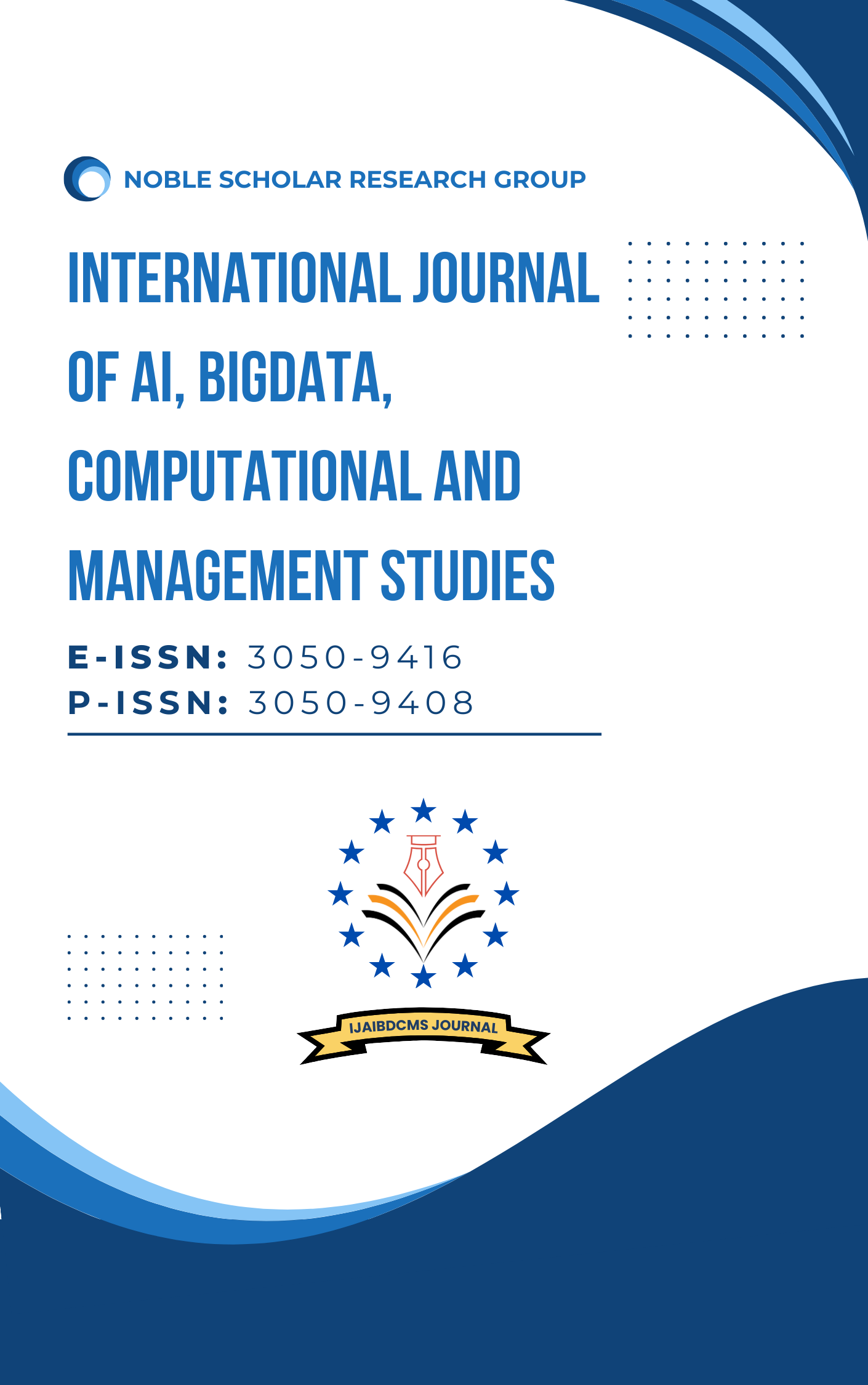Integrating ESG Metrics into AI-Driven Credit Evaluation: A Multi-Dimensional Modelling Approach for Sustainable Finance
DOI:
https://doi.org/10.63282/3050-9416.IJAIBDCMS-V5I2P108Keywords:
Sustainable Finance, ESG Metrics, Credit Evaluation, Machine Learning, Risk Modeling, Multi-Criteria Decision Analysis (MCDA), AI in Finance, Credit Scoring, Responsible Investment, Green FinanceAbstract
The transition to sustainable finance has accelerated the demand for more holistic credit evaluation frameworks that incorporate Environmental, Social, and Governance (ESG) dimensions. Traditional credit scoring models often overlook ESG-related risks and opportunities, leading to incomplete risk assessments. This study proposes a novel AI-driven multi-dimensional modeling approach that integrates ESG metrics into credit evaluation processes. Leveraging machine learning algorithms, multi-criteria decision analysis (MCDA), and factor modeling, the framework assesses the impact of ESG indicators on creditworthiness. Using a dataset comprising financial and ESG records from over 1,000 publicly listed companies, the model demonstrates superior performance in risk prediction and resilience forecasting compared to traditional credit models. The results suggest that incorporating ESG metrics can enhance credit risk assessment accuracy while aligning lending practices with sustainable development goals (SDGs). This approach offers a pathway toward responsible financial decision-making within the broader context of sustainable finance
References
1. Amel-Zadeh, A., & Serafeim, G. (2018). Why and how investors use ESG information: Evidence from a global survey. Financial Analysts Journal, 74(3), 87–103.
2. Bastos, J. A., & Lopes, J. (2023). Explainable AI in credit scoring: A transparent ESG-based approach. Journal of Risk Finance, 24(1), 19–35.
3. Baulkaran, V. (2023). ESG performance and firm credit risk: Evidence from machine learning techniques. Journal of Sustainable Finance & Investment, 13(2), 317–334.
4. Berg, F., Kölbel, J. F., & Rigobon, R. (2022). Aggregate confusion: The divergence of ESG ratings. Review of Finance, 26(6), 1315–1344.
5. Bolton, P., & Kacperczyk, M. (2021). Do investors care about carbon risk? Journal of Financial Economics, 142(2), 517–549.
6. Capasso, G., Gianfrate, G., & Spinelli, M. (2022). Climate change and credit risk. Journal of Financial Stability, 58, 100950.
7. Dorfleitner, G., Halbritter, G., & Nguyen, M. (2015). Measuring the level and risk of corporate responsibility. European Journal of Operational Research, 241(2), 630–647.
8. Fuster, A., Goldsmith-Pinkham, P., Ramadorai, T., & Walther, A. (2022). Predictably unequal? The effects of machine learning on credit markets. Journal of Finance, 77(3), 1545–1591.
9. Kotsantonis, S., Pinney, C., & Serafeim, G. (2016). ESG integration in investment management: Myths and realities. Journal of Applied Corporate Finance, 28(2), 10–16.
10. La Torre, M., et al. (2020). Sustainability in finance: Incorporating ESG factors into credit risk modeling. Journal of Cleaner Production, 273, 123142.



